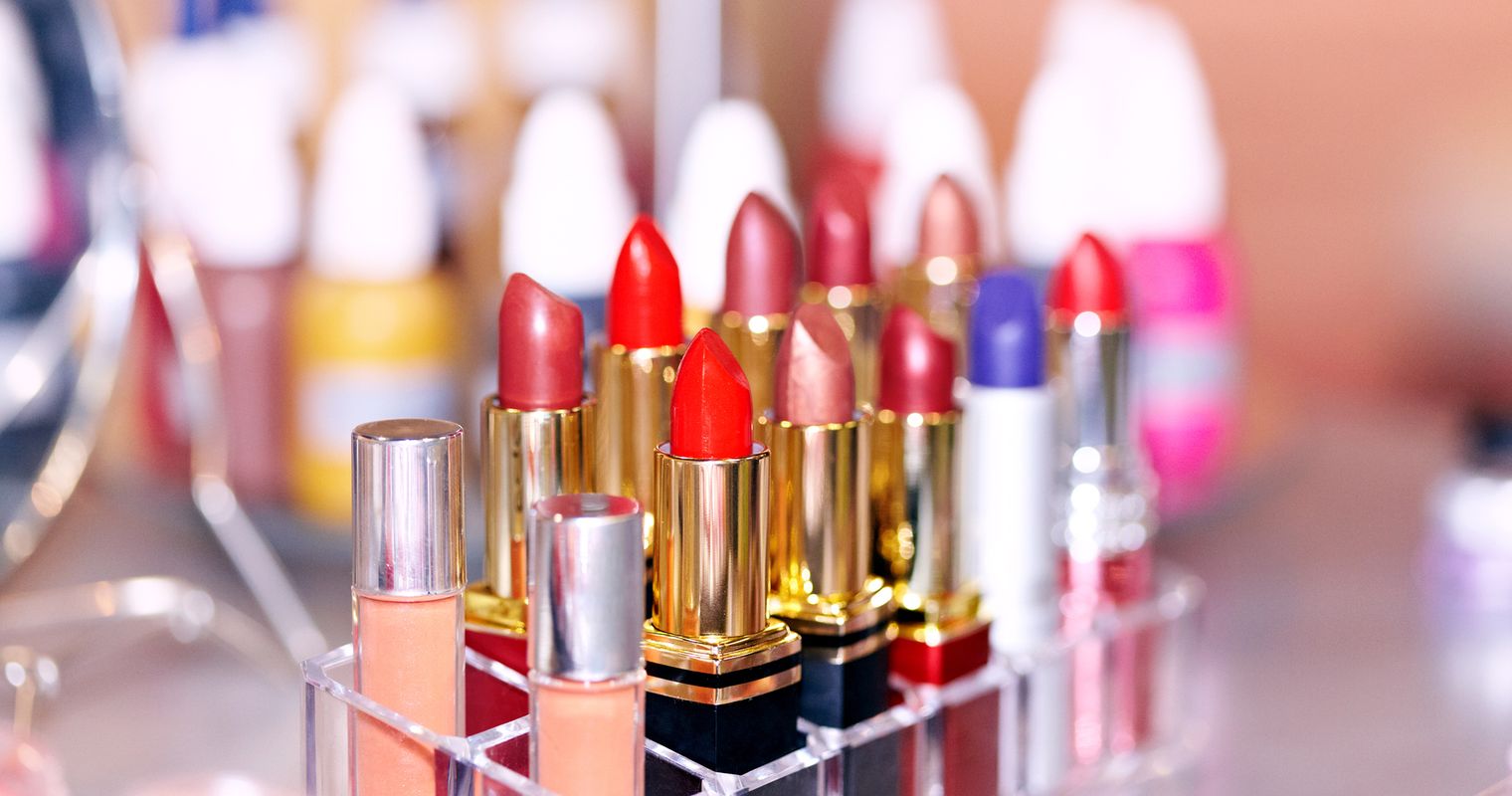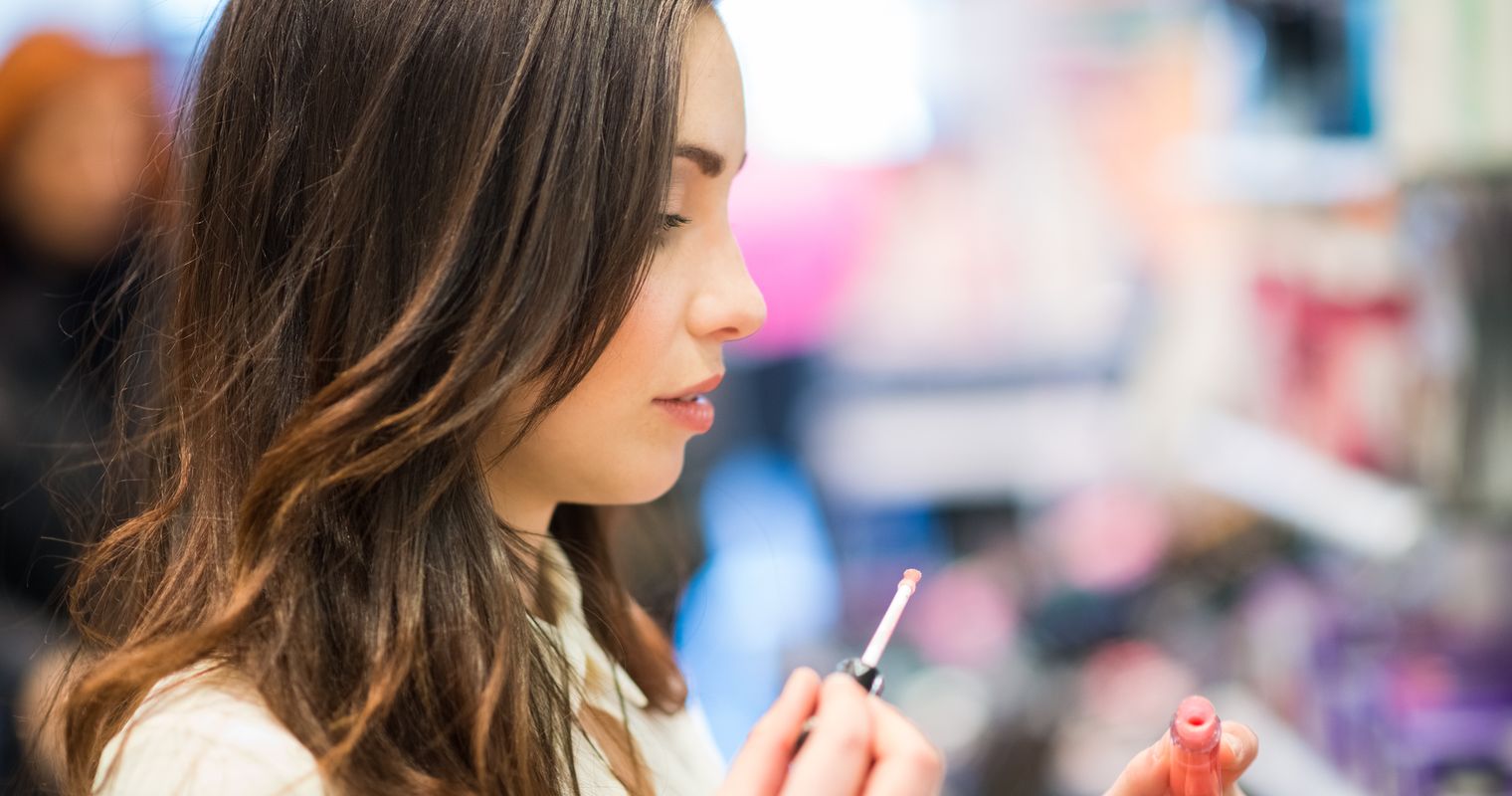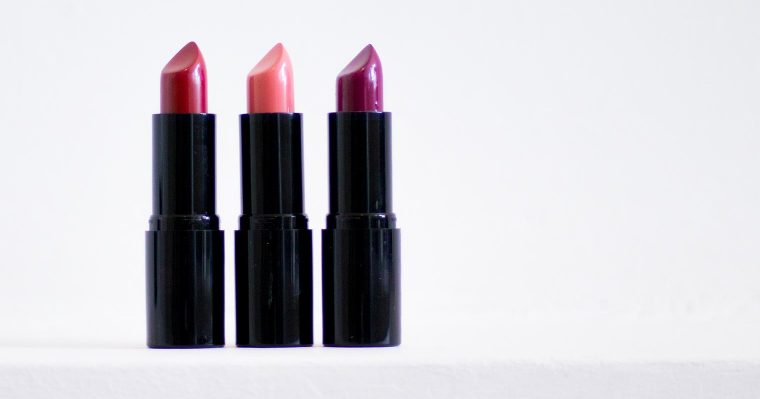Harmful Ingredients in Lipsticks
Lipsticks contain a noxious mixture of petroleum-based chemicals, many of which have not been tested for safety. Some of the chemicals in lipstick are easily absorbed through the lips and each time you lick your lips, you ingest a small dose of these toxic chemicals.
Lips are sensitive and easily absorb products through the thin layer of skin that covers them. Lip skin lacks hair and sweat glands, which means that they don’t have the same natural defenses that other types of skin have.
Lipstick is the most popular beauty product used by women around the world, but how many women actually know what ingredients are in lipstick?

What are the ingredients in lipsticks? (most are toxic!)
The ingredients in lipstick include a number of toxic chemicals such as:
1. Methylparaben
Methylparaben is added to lipstick because it is an antifungal and a preservative. It’s widely used in other cosmetics too. Its purpose is to prevent fungal growth in the product generally to preserve it.
Methylparaben is rapidly absorbed through the skin and intestinal tract, but the body eliminates it quickly, too. It is not stored in the body. Despite concerns about it being carcinogenic, studies have not conclusively shown that it is.
However, this preservative is restricted in most of Europe because of the possible cancer risk. It can possibly also alter the endocrine system or be toxic in other ways. Alarmingly, methylparaben is often a “hidden” ingredient, which means that it is not shown on the ingredient list, making it almost impossible for consumers to be aware of the presence of this toxic ingredient.
Methylparaben has been classified as a “moderate risk” by the Cosmetics Database.
There are natural alternatives such as essential oils, vitamins, and some herbal extracts that are effective against bacteria. A disadvantage is that they don’t usually last longer than a year, so while they might be good for use in a product that’s used up quickly, like face cream, they may not be ideal for lipsticks. An example is sodium benzoate which is a natural preservative that does not have side effects on many people.
2. Polyparaben
Polyparaben is added as a preservative to lipsticks to prevent the growth of harmful bacteria and mould. It keeps the oily part of the lipstick from going rancid. This protects both the product and the consumers. There is evidence that it is an endocrine disruptor and that it is an allergen for some people. It does not seem to accumulate in the body and has been passed as safe for use in cosmetics provided that concentrations are restricted. However, the cosmetics database lists it as a “high risk” product.
Many brands have created beautiful, effective, non-toxic lipsticks using safe ingredients. Some of them use natural preservatives like salt, honey, and clay to protect the products, while others claim to just use half of the acceptable amount of polyparaben.
The disadvantage of products with no polyparabens is that they are often more solid, to keep them fresher for longer because it is the soft, oily part of the ingredients that turn rancid the quickest. These polyparaben-free products give you peace of mind that they are not going to disrupt your endocrine system and are free of carcinogens. They are usually more cost effective too.
3. Retinyl Palmitate
Retinyl palmitate is added to lipsticks as an antioxidant. Retinyl palmitate is used as a synthetic preservative. It’s a synthetic form of vitamin A, and it has been shown that it may be harmful to pregnant women. The cosmetics database lists it as a “moderate hazard” because there is some evidence that links it to some cancers and reproductive problems. It is easily absorbed by the skin. Once absorbed, it turns first into retinol and then into retinoic acid.
When exposed to ultraviolet light, retinol compounds break down and produce toxic radicals that can damage DNA and cause genetic mutations, which are a precursor to cancer.
The advantages of using it are that, even though it is a synthetic form, the body can still use it as vitamin A. Once it has been applied to the lips it is absorbed through the skin. It is one of the most important vitamins for the skin in terms of skin appearance because its tiny molecules can penetrate right to the deeper layers of the skin, helping to repair collagen and elastin.
This is why products containing it are often marketed as “anti-aging”. It is an exfoliator that has the effect of removing the upper dry skin layers to reveal the new cells underneath. This is how it keeps lips soft and smooth.
If you do use a lipstick containing this ingredient, it’s best to avoid it when pregnant, and to avoid direct exposure to sunlight, such as wearing it to the beach.
There are natural lip products available that contain beneficial oils like jojoba, macadamia, and grape seed.
4. Dyes
Dyes are used to give lipstick their colour, and there are certainly many different ones on the market to choose from. Which colours are in fashion changes all the time, but the reds and pinks are classics with timeless appeal.
A lot of lipsticks are made with synthetic dyes that come from aluminium or petroleum products. These dyes are stored in our bodies in the organs and fatty tissues. Coal tar, one of the petroleum products that’s used, is known as a carcinogen. Some of the colours may even contain heavy metals. Some of them are not approved as food colourants yet may be used in cosmetics.
When a colour is named “FD&C” it means that it has been approved by the US Food & Drug Administration (FDA) for use in food, medicines and cosmetics. When it’s labelled “D&C” then it has not been approved for food. ‘D&C RED 36‘ is one of these colours. It has been labelled as “low risk”, yet it is tested on animals and some research has shown a link between exposure and nervous system damage. ‘D&C RED 22‘ is a powder colour also used in lipstick and many other cosmetics. The FDA has listed it as safe.
There are those who would prefer to use more natural and organic lipstick products. These have the advantage of having minimal environmental impact because they are biodegradable and come from natural sources. If you prefer softer, more natural shades, natural dyes can help you achieve that look. Many use ingredients like beetroot or cocoa, for example.
The disadvantages of using lipsticks with natural colourants are that they don’t have such a long shelf life, and they can be more expensive. The colours tend to fade quicker, so need to be applied more often. The colours are also not as consistent as you would get from an artificial source.
Bear in mind that even natural dyes can also be harmful to some extent. Logwood contains the ingredients haematein and haematoxylin, that can have harmful effects when inhaled, ingested, or absorbed through the skin. Bloodroot, another natural dye source, could cause irritation and inflammation when inhaled.
Some lipstick dyes have animal derivatives. Some of these products that lipsticks can contain may be crushed beetles, as carmine or cochineal. The shell of the beetle is what creates the strong red pigment in many lipsticks and cosmetics. Carmine is typically produced by boiling dried cochineal insects in water, filtering out the hard matter and then treating the solution with alum. It takes about seventy thousand insects to make a pound of cochineal dye!
5. Tocopheryl Acetate
Tocopheryl acetate is a specific form of vitamin E that’s often found in skin care products and dietary supplements. It’s also known as tocopherol acetate or vitamin E acetate. This ingredient is basically a form of vitamin E created in the laboratory.
Manufacturers take natural vitamin E and add acetic acid to it to make it last longer and to reduce its cost. Vitamin E is known for its antioxidant properties, therefore it is used in lipsticks because it’s a natural skin-conditioning agent and antioxidant. The Cosmetics Database qualifies it as a “moderate risk” because it can cause itching, burning, peeling, hives and blisters on the skin, and it can be toxic. Some studies with it showed some “enhancement of photocarcinogenesis,” which means it may increase the carcinogenic effects of UV rays.
Naturally occurring antioxidants, such as certain polyphenols, are now available as extracts or part of certain speciality ingredients. These compounds exert a strong antioxidant effect that can spare or replace the role of vitamin E. Indeed, at times when vitamin E becomes extremely expensive, such additives find increased usage. In general, at least a minor part of vitamin E can be replaced by such products, especially when this vitamin is used at supra-nutritional levels.
There is little difference between the natural and synthetic forms of most tocopherols but with vitamin E, natural is better.
Frequently asked questions:
Is applying lipstick harmful?
It is not harmful to expose yourself to small amounts of lipstick containing these ingredients we have listed above. However, if you are someone who applies lipstick on a daily basis and reapplies it repeatedly throughout the day, you may want to change to a more natural product. There are plenty available, and it will just take a little research to find one that suits you.
Learn to read the labels and check for the more harmful ingredients. Remember, what goes on to your lips also goes into your mouth.
Is it safe to eat lipsticks?
If you wear lipsticks, you are bound to accidentally eat it too. Every time you lick your lips or eat out, you ingest small amounts of your lipstick. The impact of the harmful ingredients in lipsticks increases a lot more when ingested directly than when absorbed by the lips. While they may not be harmful in small quantities, using lipsticks regularly means you’re ingesting scary amounts of these chemicals.
Is the lead in some lipsticks safe?
Lead is known as a neurotoxin that accumulates over time. It is commonly used in lipsticks. Studies show that up to 60% of the lipstick tested contains lead. It isn’t an actual ingredient, but it is a contaminant that makes its way through the materials used to manufacture the products, or through the pigments that are used in them.
Lead is particularly dangerous for pregnant women and young children. This is the cause of neurodevelopmental problems in children and has been linked to miscarriages and infertility. Lead is not something you want to consume!
There is no “safe” level of lead exposure.

Fun facts about lipsticks
- Although the term “lipstick” was not used until 1880, the use of lipstick dates back to Ancient Egypt. It is said that Cleopatra made her red lipstick from triton shells and crushed carmen ants.
- It is not considered acceptable to apply lipstick in public, especially at the dinner table in a fancy restaurant.
- Have you ever seen a silent movie from 1920 and wondered why the actresses wore black lipstick? That’s because the film stock was sensitive to colour and the red lipstick would register as black!
- White lipstick was a trend in the 1960s for a truly “mod” look.
- Some shimmery lipsticks used to contain fish scales also known as “pearl essence” for brightness.
- It is said that women who use lipstick daily involuntarily eat around four pounds of lipstick in their lifetime.
- According to a study called the “lipstick effect”, women buy more lipstick during economic downturns due to the need for “cheap treats”.
- Sales of lipstick also tend to rise on dark or rainy days. But can you blame us?
- In the 1700s, a man could nullify his marriage if his wife had used lip rouge during their courtship. Oh, the horror!
- Over 80 per cent of American women wear lipstick – that’s more than the French!
References
https://gimmethegoodstuff.org/safe-product-guides/lipstick/
https://www.harpersbazaar.com/beauty/makeup/advice/a485/lipstick-ingredients-020410/
https://www.truthinaging.com/ingredients/retinyl-palmitate
https://greenlivingaz.com/lipstick-dangerous-cosmetics/
https://www.chiquesolutions.com.au/post-title-5/
https://www.drugs.com/inactive/d-c-red-no-22-346.html
https://www.huffingtonpost.com/lisa-mirza-grotts/lipstick-etiquette_b_1540157.html







